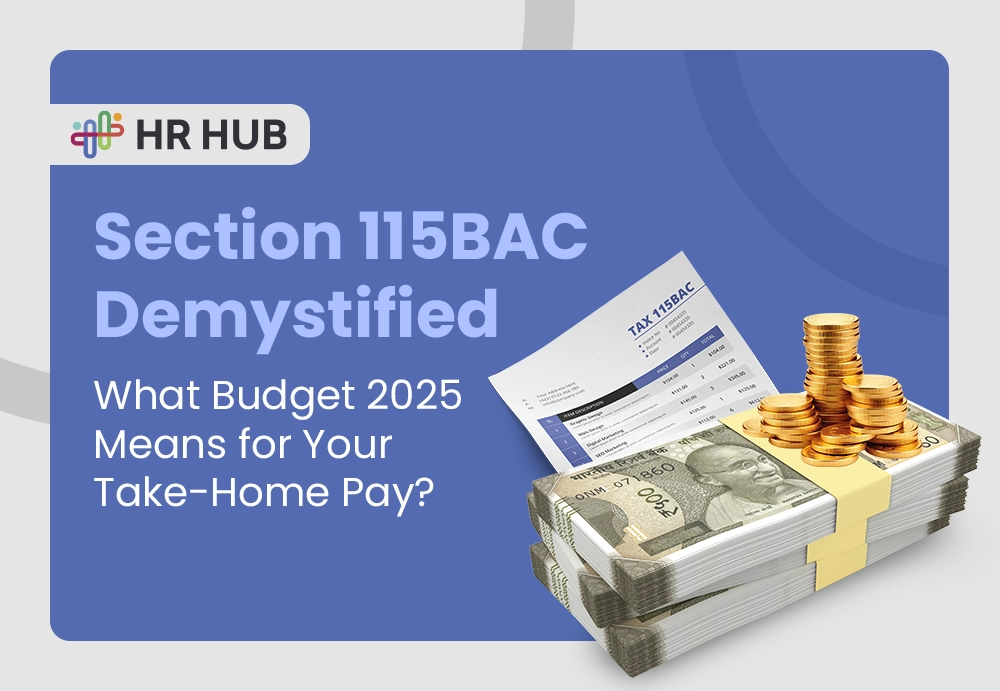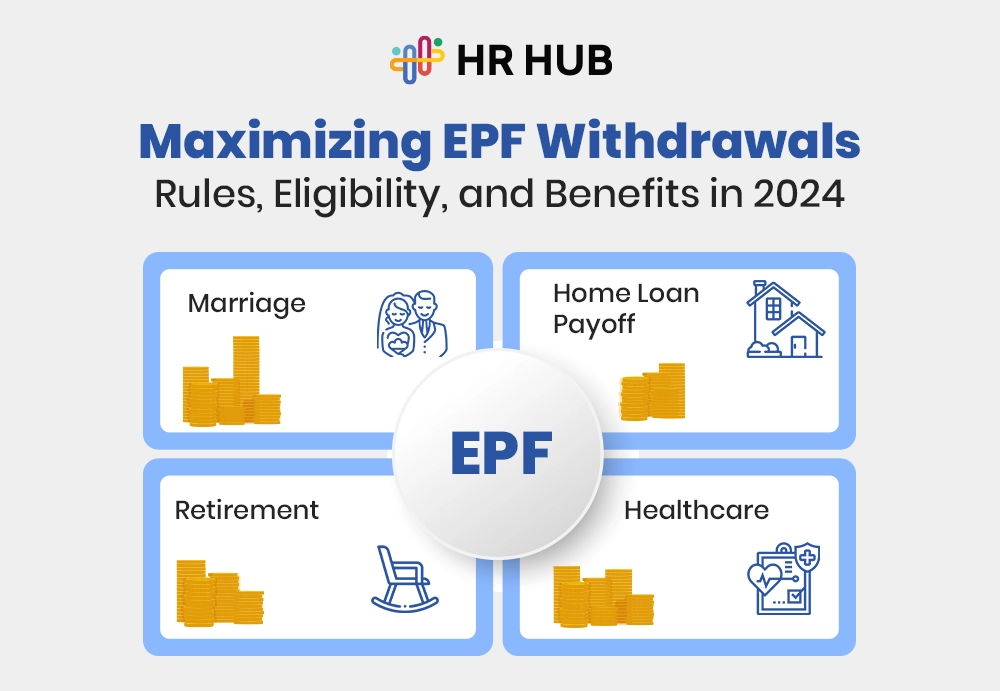


This site uses cookies to deliver our services. By using our site, you acknowledge that you have read and understand our Cookie Policy. Your use of HR HUB's services is subject to these policies.

Gone are the days when employees viewed HR only as the department that handed out offer letters, processed leave forms, and managed payroll. Today, an employee’s journey with an organization is far more holistic — it starts from the first interaction with a recruiter and continues long after an employee leaves. Every touchpoint matters.
What’s driving this transformation? The rise of HR software.
By digitizing, automating, and personalizing the employee lifecycle, companies all over the world are reconsidering how they handle people management. In a highly competitive market, companies that use HR technology are finding that they are in a better position to attract talent, engage staff, and retain top performers.
The employee journey can be imagined as a cycle: recruitment, onboarding, development, engagement, retention, and finally offboarding. Each stage is an opportunity for companies to shape how employees feel about their work and the organization.
Without technology, managing these stages often leads to inefficiencies, delays, and inconsistent employee experiences. In contrast, organizations that digitize the journey with modern tools consistently outperform in employee satisfaction, productivity, and long-term retention.
So, what makes HR software so transformative? It’s not about replacing humans with machines — it’s about removing friction.
Let’s break it down:
By taking over repetitive tasks, HR software gives HR teams the freedom to focus on culture, strategy, and people — the very things that define an organization’s success.
Behind this shift is the powerhouse known as HRIS systems — Human Resource Information Systems.
Think of them as the control center of the employee experience. Every record, every process, every insight lives here. But unlike traditional databases, HRIS platforms don’t just “store” — they analyze and connect.
For example:
In essence, HRIS systems transform what was once HR chaos into a strategy-enabling ecosystem. Without them, businesses run on guesswork. With them, leaders make decisions with confidence and foresight.
Recruitment has evolved from a manual, paper-heavy process into a smart, technology-driven experience.
AI-powered applicant tracking systems (ATS) now scan resumes in seconds, highlight the best candidates, and even evaluate cultural fit. Video interviews shorten the screening cycle, while automated emails ensure no candidate feels left in the dark.
This speed and transparency not only save time but also position your company as modern and employee-centric — crucial for attracting top talent in a competitive market.
The employee journey doesn’t start on their first day anymore. With HR software, preboarding begins as soon as the offer is accepted.
Employees receive digital welcome kits, access to FAQs, and online paperwork so they arrive on day one fully prepared. Some HRIS systems even give early access to learning modules or team introductions, helping new hires feel like part of the organization before they even walk through the door.
Traditional onboarding often overwhelms employees with forms and policies. Today, digital onboarding portals streamline this into a smooth process — from e-signing contracts to automated device provisioning.
More importantly, onboarding now emphasizes people: virtual introductions, buddy programs, and personalized training tracks ensure new hires feel supported and connected.
HR software transforms this stage into an experience that builds confidence and belonging from the start.
Growth is no longer an annual review discussion. Modern HR systems enable ongoing check-ins, instant feedback, and structured goal setting.
Personalized learning paths highlight relevant courses, while skills-gap analysis identifies where employees can improve. Recognition platforms also celebrate achievements in real-time — boosting morale and motivation.
Employees don’t just show up to work; they feel invested in their own growth.
A happy workforce is an engaged workforce. HR technology now integrates wellness initiatives, surveys, and pulse checks into everyday workflows.
Imagine receiving quick weekly surveys on employee mood, or offering access to meditation and fitness apps through the HR portal. By connecting well-being with engagement, companies build loyalty and reduce burnout — especially important in today’s hybrid and remote work culture.
Retention is rooted in trust. Employees stay when payroll is accurate, benefits are clear, and growth opportunities are visible.
The best HR software now offers predictive analytics that highlights employees who might be considering leaving — giving managers a chance to intervene with new challenges, mentorship, or career opportunities.
Career pathing features also allow employees to see a future within the company, reducing attrition.
An employee’s exit is often overlooked, but it can shape your employer brand as much as hiring does.
HR technology ensures graceful goodbyes: automated clearance workflows, knowledge transfer checklists, and digitized exit interviews that capture honest feedback.
Many organizations also use alum portals to maintain long-term connections, transforming ex-employees into advocates and potential rehires.
The journey doesn’t always end at offboarding. With HR software, companies are now maintaining alum networks where past employees can access updates, events, or even rehiring opportunities.
This extended relationship fosters brand advocacy, strengthens reputation, and sometimes brings skilled professionals back in the future. In a world where talent is scarce, your alums can be one of your strongest assets.
We often think of HR technology as something that solves today’s problems — processing payroll faster, tracking attendance accurately, or reducing paperwork. But the real power of HR tech lies in how it anticipates tomorrow’s challenges and redefines what “work” feels like. The next chapter of HR isn’t just digital — it’s predictive, personalized, and profoundly human-centered.
Artificial intelligence is no longer a futuristic buzzword in HR — it’s already shaping how organizations understand their people. Instead of waiting for resignations to pile up, predictive HR tools analyze patterns like declining engagement scores, absenteeism, and performance dips to forecast attrition risks. They can even suggest interventions, such as assigning mentorships, adjusting workloads, or creating growth opportunities.
Beyond retention, AI is also transforming learning and leadership. Imagine an employee completing a project and the system instantly recommending new skills to master — or highlighting who is quietly displaying leadership potential long before a formal appraisal does. That’s the power of moving from reactive management to proactive talent cultivation.
For decades, HR was seen as a gatekeeper of employee information. Need a payslip? Call HR. Want to update your address? Send an email.
Today’s employee-first portals turn that model upside down. Self-service systems allow employees to manage their own data, apply for leave, track benefits, and access learning resources without HR intervention.
This shift isn’t just about convenience; it’s about empowerment. Employees feel more in control of their careers, while HR teams can finally step away from repetitive admin tasks and focus on strategic, people-first initiatives.
Office walls shouldn’t bind work. Mobile-first HR solutions are now the expectation, not the exception. From clocking in remotely to submitting performance feedback during a commute, employees demand seamless access anytime, anywhere.
This is especially critical for industries with frontline workers — think retail, hospitality, or healthcare — where not everyone has a desktop at hand. With HR apps, employees can stay connected to their organization, bridging the gap between headquarters and the field.
Employees are increasingly asking: What does my career path look like here? How does this company care for me as an individual? HR technology is answering with personalization at scale.
Instead of one-size-fits-all benefits, systems can offer cafeteria-style plans where employees choose what suits their life stage — from health insurance add-ons to wellness allowances.
Systems link each employee's objectives and strengths to particular internal opportunities or training programs, allowing for customized career advancement. Whether it's a private note or a public shoutout, even recognition gains greater significance when it is given in ways that each employee values.
The next evolution isn’t just collecting data — it’s using it to shape culture. Advanced analytics in HRIS systems give leaders insights into diversity metrics, pay equity, and skill distribution.
This allows companies to not only fix gaps but also measure progress against long-term cultural goals. For example, dashboards that track inclusivity initiatives or gender representation in leadership create accountability and transparency — something employees increasingly demand.
HR systems of the future won't be isolated. They will work in unison with productivity and wellness apps, financial platforms like ERP systems, and collaboration tools like Slack or Teams. The objective? Establishing a cohesive ecosystem that integrates human resources into daily work life, rather than perceiving them as a distinct "system."
The employee journey is no longer just an HR function — it’s a strategic advantage. By weaving technology into every touchpoint, organizations create journeys that attract talent, engage hearts, and inspire loyalty long after employees leave.
This is exactly what HR HUB is built for. With over 30 modules covering everything from recruitment to payroll compliance, HR HUB doesn’t just digitize processes — it transforms the way businesses experience HR. By simplifying complexity and focusing on people, it empowers leaders to build workplaces that are not only efficient but also inspiring.
Because in the end, the real revolution isn’t about technology replacing humans — it’s about technology freeing humans to focus on what matters most: people.



Ready to streamline your HR processes? Contact us today to learn how HR HUB can help your organization thrive. Fill out the form, and one of our experts will reply shortly. Let's empower your workforce together!
